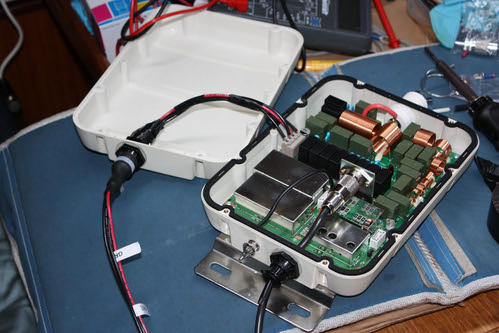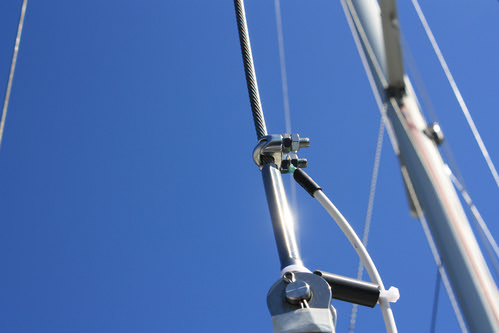As a part of the
larger project to refurbish the starboard side of the saloon on
Eolian, the revamp of the liquor cabinet doors qualifies as a "small" boat project.
Originally, the doors were made with the ubiquitous teak louvers, but I wanted something a little fancier. So for my first ever stained glass project, I decided to make something to fill the 5x7 inch opening in newly-made doors. I originally considered something using beveled glass (and I may yet go back and do it), but I settled instead on a
*very* stylistic representation of Calla lilies. Each one only took 3 pieces of glass, none of which were fiddly or delicate.
 |
| Kind of looks like martini glasses too |

When I made them, I cut a 3/8" rabbit in the back of the doors, so it was easy to mount the glass panels by just bedding them in some polysulphide. To keep from having a tremendous mess with the polysulphide (this stuff seems to go everywhere as soon as you open the tube), I masked both the door frame and the edge of the glass before applying it. Then, after smoothing it but before it had begun to cure, I removed the tape.
I still wonder about the beveled glass tho...




































